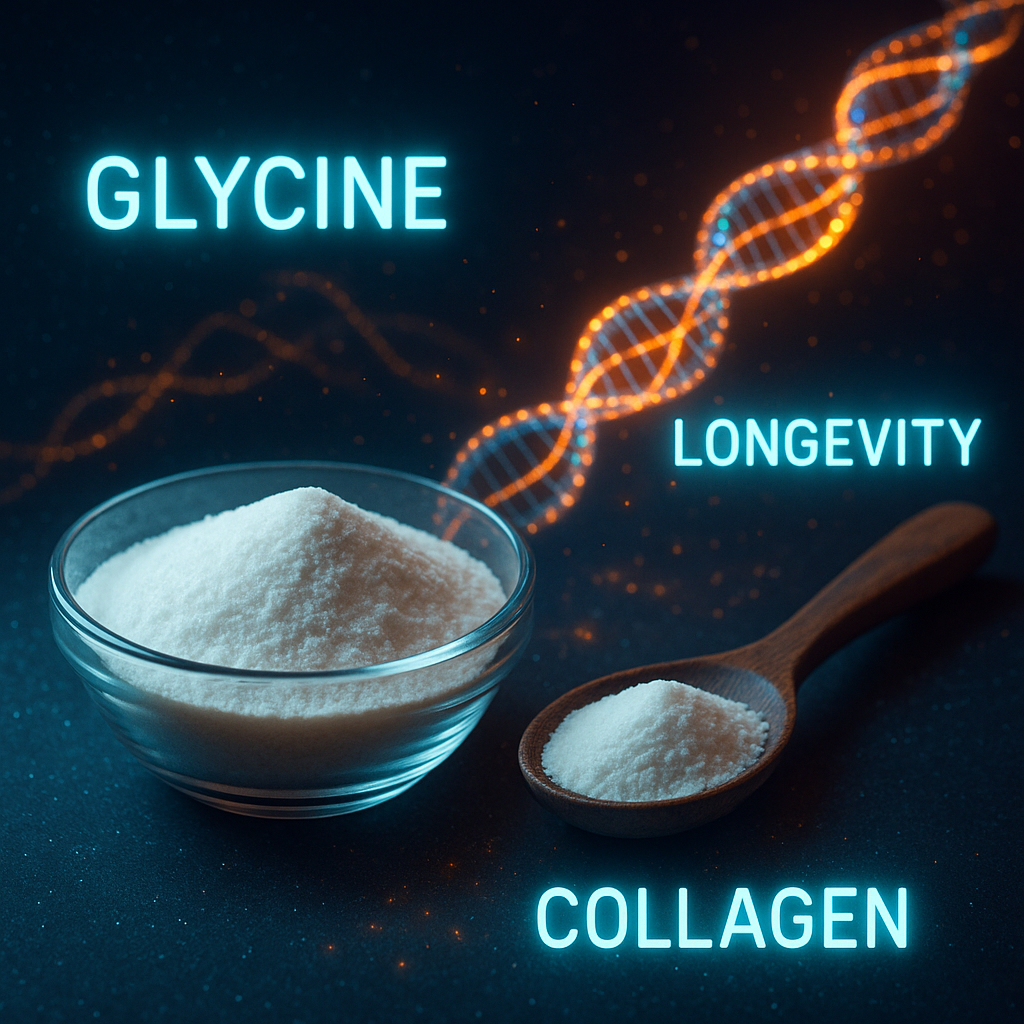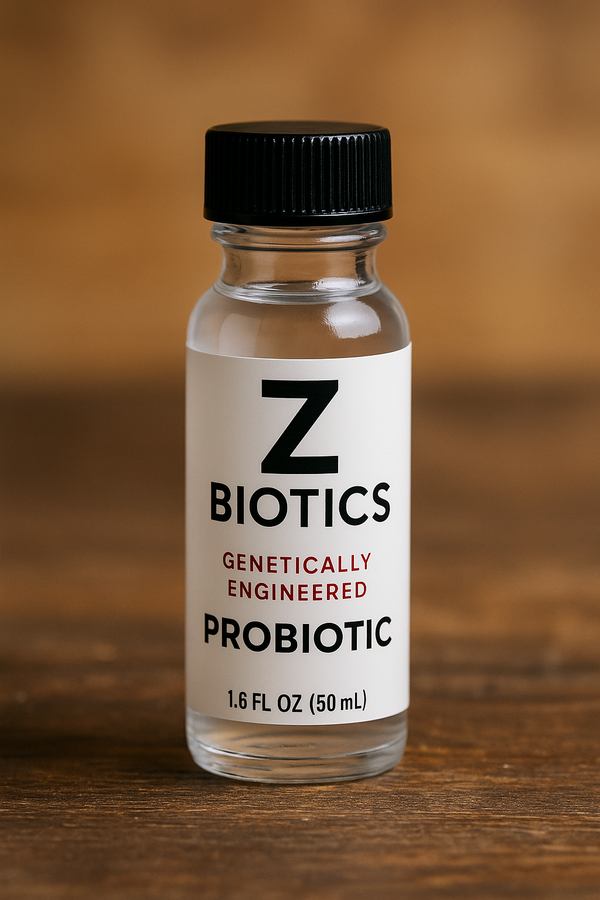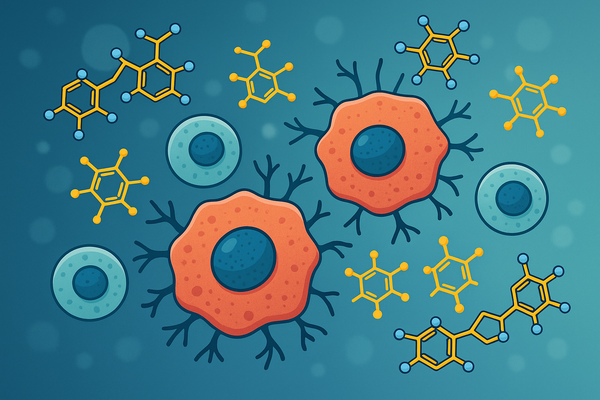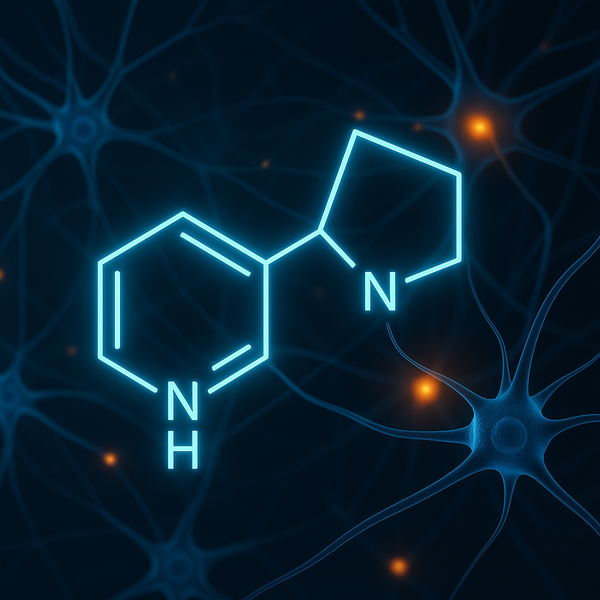Glycine: The Quiet Amino Acid with Big Longevity Benefits

When people talk about anti-aging nutrients, glycine rarely makes the front page. Yet this simple amino acid may quietly support collagen production, deep sleep, liver health, and healthy aging. As we age, glycine availability and collagen both decline, which can ripple across tissues that rely on repair and detoxification.
What Glycine Is and Why It Matters
Glycine is the smallest amino acid and a primary building block of collagen, the protein scaffolding for skin, joints, bones, and connective tissue. In collagen’s triple helix, every third residue is glycine, making supply critical for proper formation.
Beyond collagen, glycine helps: calm the nervous system and improve sleep; participate in detox via glutathione; and support metabolic health. Reviews estimate typical dietary intake is ~1.5–3 g/day, which may be below what’s optimal for collagen-heavy metabolism.
Mechanisms of Action
- Collagen synthesis: High glycine demand in collagen (Gly-X-Y repeats) means shortages can impair triple-helix stability and tissue repair.
- Mitochondria & healthy aging: In older adults, combining glycine + NAC (GlyNAC) improves glutathione deficiency, mitochondrial function, inflammation, and other aging markers in clinical trials.
- Glutathione production: NAC supplies cysteine (rate-limiting) while glycine prevents bottlenecks; together they raise intracellular glutathione.
When to Start Supplementing
Skin collagen content declines ~1% per year with age, beginning in early–mid adulthood; women also have lower baseline collagen than men. Considering that natural glycine synthesis may be insufficient for needs, many adults in their 30s–40s (and beyond) can benefit from targeted intake.
Recommended Dosing
- General & collagen support: 3–5 g glycine daily.
- Sleep or calming: 3 g glycine ~1 hour before bed (supported by human studies).
- GlyNAC (glutathione & longevity focus): Glycine 4–6 g + NAC 600–1200 mg, once or twice daily, taken together. Clinical studies used similar ranges in older adults. (Consult a clinician if you have liver/kidney issues, take anticoagulants, or are pregnant.)
Potential Benefits Seen in Studies
- Better sleep quality and next-day performance with 3 g at bedtime.
- Increased glutathione, improved mitochondrial function, and multi-system aging marker improvements with GlyNAC.
- Support for skin, joints, and connective tissue via adequate collagen precursors.
Final Thoughts
Glycine isn’t flashy, but its roles in collagen architecture, detox capacity, and cellular energy make it a smart, inexpensive lever for long-term health. Pairing glycine with NAC amplifies glutathione support (GlyNAC), with encouraging human data in older adults.
Sources
- Fidler AL, et al. Essays Biochem. 2018 — Glycine’s essential role in collagen triple helix.
- Horng JC, et al. Proc Natl Acad Sci USA. 2007 — Every third residue in collagen is glycine.
- Boudko SP, et al. Matrix Biol Plus. 2025 — Why only glycine fits the triple helix core.
- Shuster S, et al. Br J Dermatol. 1975; and Shuster 2020 commentary — ~1%/year collagen loss.
- Alves A, et al. Nutrients. 2019 — Typical dietary glycine ~1.5–3 g/day.
- Meléndez-Hevia E, et al. J Biosci. 2009 — Endogenous glycine synthesis may be insufficient (conditionally essential).
- Bannai M, et al. Front Neurol. 2012 — Human data: glycine improves sleep/next-day performance.
- Kumar P, Sekhar RV, et al. Clin Transl Med. 2021; Nutrients/reviews 2022 — GlyNAC improves multiple aging abnormalities in older adults.



